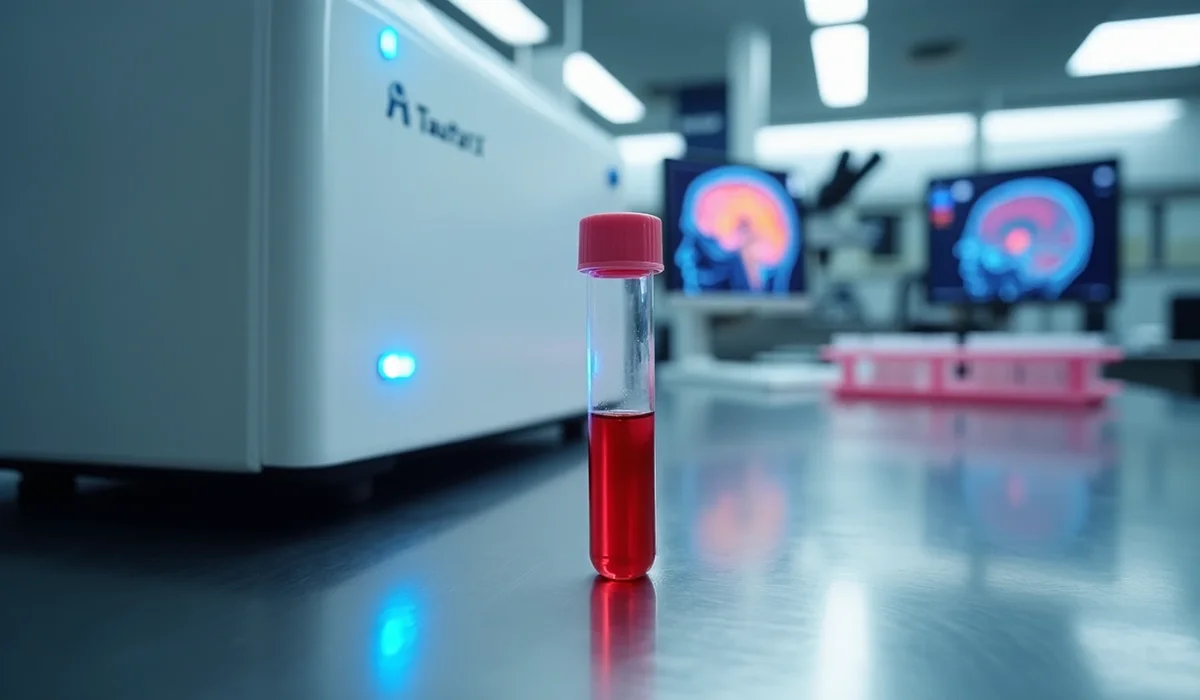Recent research has revealed something startling – marijuana can affect driving skills for up to five and a half hours after use. This duration nearly doubles the commonly believed three-hour window. The Journal of Psychopharmacology’s findings raise important questions about marijuana’s impact on driving abilities and challenge our previous understanding of cannabis safety while driving.
The findings carry extra weight since 52 million Americans reported using cannabis in 2021. Study participants believed they were fit to drive after just two to three hours. However, they showed noticeable impairments in significant skills like lane-keeping, car-following, and overtaking tasks. Cannabis has become the second most detected impairing substance among drivers, right after alcohol. The National Highway Traffic Safety Administration reports that driver cannabis use has jumped 46% since 2007.
A dangerous gap exists between drivers’ perception and their actual ability to drive safely after using cannabis. Research indicates that roughly two-thirds of users would get behind the wheel while impaired. This behavior presents a significant public safety risk that just needs immediate action.
New Study Reveals How Marijuana Interferes with Driving Ability
Lab results now show exactly how marijuana affects driving skills. This expands what we knew from 3-year old research. Cannabis impairs both cognitive and physical abilities needed to drive safely. These effects show up in many ways and affect everything from focus to making decisions.
Research Shows Longer Lasting Effects Than Expected
In stark comparison to this common belief, marijuana keeps affecting driving long after people think it’s worn off. Most cannabis users think they’re fine after 2-3 hours. The research tells a different story – physical impairment can last 3-6 hours after smoking. Higher THC doses (13%) can stretch this effect up to 5.5 hours.
The biggest problem lies in how people feel versus how they actually perform. Test subjects said they felt high for just 2-3 hours and were ready to drive after that. Yet the tests showed their driving skills were still off. This creates dangerous situations where drivers hit the road while still impaired.
The effects of cannabis on driving skills seem linked to how long someone has been using it. Former heavy users still show signs of impairment even after staying clean for several weeks.
Cannabis Hurts These Essential Driving Skills
Cannabis use hits multiple driving skills at once. The research points to several specific problems:
- Lane position control: Drivers weave more and struggle to stay in their lane after using cannabis. This is one of the clearest signs of cannabis impairment.
- Reaction time: People react much slower to changes in traffic speed.
- Divided attention: Users struggle to handle multiple tasks at once. Safe driving needs quick responses to different things happening on the road.
- Decision-making abilities: Cannabis hurts judgment, especially during passing other cars. High doses make drivers choose smaller gaps between cars and misjudge collision times.
- Speed control: Drivers can’t keep steady speeds or following distances.
Regular users try to make up for these problems by driving slower or leaving more space between cars. These tricks don’t work well enough, especially when something unexpected happens. These attempts to compensate actually make vehicle control worse because drivers can’t focus properly.
Things get even more dangerous when drivers mix cannabis with alcohol. The crash risk jumps by a lot compared to using either substance alone.
Blood THC levels don’t match up well with how impaired someone actually is. Current tests aren’t reliable enough to predict real driving performance. This makes it hard for police and lawmakers to create good testing rules.
Brain Remains Impaired Hours After Subjective High Disappears
Research reveals a startling fact about cannabis use: brain impairment continues hours after users stop feeling high. This gap between how users feel and how their brain actually works creates dangerous situations, especially when people think they can drive safely while their brain function remains substantially compromised.
The Neurological Mechanisms Behind Lingering Impairment
THC’s unique chemical properties explain why impairment lasts longer than expected. THC dissolves in fat instead of water, unlike alcohol. High concentrations quickly reach the blood and brain after smoking cannabis, then spread throughout the body’s fatty tissues faster.
This spread creates a complex pattern. THC floods the brain first and causes acute impairment. It then slowly leaks back from fatty tissues into the bloodstream over time. The biggest problem lies in how impairment happens in the brain, not the blood. This makes blood tests unreliable indicators of actual performance issues.
Personal factors add more complexity. Multiple meta-regression analyzes showed that regular cannabis users experience less impairment than occasional users. In spite of that, tolerance doesn’t completely eliminate impairment – it just reduces the effects.
Why Users Can’t Feel Their Own Impairment
Studies consistently show that cannabis users can’t accurately judge their impairment levels. Test subjects reported feeling less impaired after just 90 minutes, yet objective measurements showed their performance hadn’t improved. This false sense of confidence leads to risky situations where people drive while still impaired.
THC affects the brain’s self-assessment abilities, which creates this issue. Users can’t tell how much marijuana remains active in their brain. Blood tests might show low THC levels from either recent use with ongoing impairment or from chronic use days earlier with no current impairment. This makes biological testing alone inadequate.
Cognitive Functions Most Vulnerable to THC
THC directly affects many brain functions needed for safe driving. Research points to several cognitive areas that stay vulnerable longer:
- Verbal learning and memory: Effects last 12-24 hours, limiting your ability to process new information
- Attention and concentration: Problems persist after the high wears off
- Decision-making and judgment: Poor risk assessment continues beyond feeling intoxicated
- Perceptual motor speed: Reaction time and accuracy – vital for driving – show extended effects
These impairments usually drop by half within 1-3 days. Test scores return to almost normal within 3-7 days. Each person reacts differently based on cannabis strength, how they consume it, and personal factors.
The research suggests waiting at least 5 hours after inhaling cannabis before doing any safety-sensitive tasks. Edibles take even longer to wear off because the body absorbs them more slowly. Most experts suggest waiting 72 hours before returning to safety-critical activities.
Scientists Measure How Long Marijuana Impairment Actually Lasts
Scientists now know exactly how long cannabis affects your ability to drive safely. Lab tests and driving simulations show that impairment lasts much longer than most users think. This creates serious safety risks on our roads.
The Five-Hour Danger Zone
A complete review of 80 scientific studies points to a clear “window of impairment” that lasts between three and ten hours after taking moderate to high doses of THC. Most driving skills return to normal within five hours of smoking cannabis. Almost all functions go back to baseline within seven hours of taking a 20mg THC dose.
The “danger zone” spans these five hours. Most users think they’re fine to drive during this time, but tests show they’re still impaired. The strongest effects hit within 20 minutes of smoking. Even three hours later, users still show 10% of the maximum impairment.
Edible cannabis products take longer to wear off. The high peaks 1-3 hours after eating and lasts 4-8 hours. Effects can stick around for up to 24 hours based on the dose. Experts say you should wait at least 8 hours after eating less than 18mg THC before getting behind the wheel.
Individual Variations in Recovery Time
Your recovery time from cannabis depends on several things:
- Frequency of use: Regular cannabis users build up tolerance to THC’s impairing effects. Tests show that frequent users handle it better than occasional users.
- Metabolism and overall health: Your metabolic rate plays a big role in how fast your body processes THC. People with faster metabolism clear it quicker. Liver or kidney issues can make impairment last longer.
- Method of consumption: Different ways of taking cannabis affect you differently. Smoking effects usually fade within 3-6 hours. Edibles take much longer based on the dose.
People who use cannabis daily or several times a week recover faster than occasional users. Health problems can stretch out recovery time because they affect how well your body cleans itself.
Comparing Different Cannabis Concentrations
Higher THC doses lead to longer impairment. The effects are stronger and last longer.
Studies of people taking high-concentration cannabis (13.75mg THC) showed major driving problems 40-100 minutes after use. These effects faded after 240-300 minutes. CBD-dominant cannabis without much THC didn’t affect driving ability.
You should wait at least six hours after smoking cannabis with less than 35mg THC before driving. Higher doses need longer waits. The amount matters – people who take more THC store it in body fat, so it takes longer to clear out.
The science is clear: your driving stays impaired for about five hours after smoking cannabis and possibly much longer with edibles. This timeline helps set safe waiting periods before driving.
Blood THC Levels Fail to Predict Driving Performance
Blood THC levels don’t give us a reliable picture of marijuana impairment, which is quite different from alcohol testing. Law enforcement, medical professionals, and policymakers face huge challenges because of this disconnect as they try to regulate cannabis use and driving.
Why Current Testing Methods Fall Short
Blood testing for THC has several major drawbacks. We can’t test blood right after traffic incidents—it takes 1.5 to 4 hours to complete, and by then THC levels drop by a lot. The body processes THC faster than alcohol. Blood THC peaks at over 100 nanograms per milliliter just 15 minutes after smoking, then drops to less than 2 nanograms within four hours. These levels keep dropping whatever the person’s impairment level.
RTI International’s research proves that THC levels in blood, urine, and oral fluid don’t relate to cognitive or psychomotor impairment for oral or vaporized cannabis. Many study participants’ cognitive function dropped by a lot even with tiny amounts of THC in their blood.
The Complex Relationship Between Consumption and Impairment
Cannabis’s unique properties create this gap between measurable THC and actual impairment. THC is fat-soluble, unlike alcohol which dissolves in water. This means THC moves easily from blood into fatty tissues—including the brain. THC can stay in the brain even after it’s no longer detectable in blood.
Different ways of taking cannabis make assessment even trickier. Smoking cannabis leads to quick spikes in blood THC that drop fast. With edibles, blood THC peaks hours after eating and stays relatively low despite high impairment. Someone could be too impaired to drive yet still pass a blood test.
How Tolerance Complicates Assessment
Regular cannabis users create special challenges for impairment testing. Heavy users might build up high THC levels in their body fat that leaks into their bloodstream for weeks after smoking. These users show detectable THC levels even when they’re not high, unlike occasional users.
Regular users also build up tolerance to many effects. Research shows that chronic, heavy recreational cannabis users’ driving stays impaired compared to non-users even after 12+ hours without use. It’s not simple though—people who use cannabis more often develop behavioral tolerance, but they often take larger doses to make up for it.
The National Safety Council looked at all this evidence and decided there’s “no minimum safe threshold blood concentration below which a driver can be considered unaffected”. This finding challenges the per se limits that some places have adopted.
Researchers Compare Marijuana’s Effects to Other Substances
Different substances affect driving performance in unique ways. Research into how these substances impact drivers helps us learn about impairment patterns and their safety implications.
Cannabis vs. Alcohol Impairment Patterns
Alcohol and marijuana affect driving through completely different mechanisms. Alcohol makes drivers take more risks and clouds their judgment, which leads to speeding and following too closely. Cannabis users react differently – they try to make up for their impairment by driving slower, staying in their lanes better, and keeping more distance from other cars.
These substances create opposite effects on driving skills. We noticed that alcohol affects basic, automatic driving functions but leaves complex tasks relatively intact. Cannabis does the exact opposite – it has a bigger impact on complex tasks than automatic ones.
The way users perceive their impairment also differs. People under the influence of alcohol often don’t realize how impaired they are. Cannabis users tend to have a better grasp of their impairment levels. This difference in self-awareness explains why drunk drivers take more risks.
Combined Substance Use Multiplies Driving Risks
The dangers skyrocket when people mix alcohol and cannabis. Research shows this combination creates additive or multiplicative effects on impairment. The biggest concern is that alcohol cancels out the careful driving strategies that cannabis users typically use.
The numbers tell a concerning story. About 18% of impaired drivers test positive for multiple substances, with alcohol and THC being the most frequent combination. Even more alarming, 75% of drivers who test positive for THC also have other substances in their system, mainly alcohol.
How Prescription Medications Compare
Prescription medications create their own set of driving dangers. One in 20 adults admits they drive within two hours of taking potentially impairing prescription drugs. The risks become even greater when these medications mix with cannabis or alcohol.
Opioids pose a specific threat because they cause drowsiness and affect thinking ability. Data from 2020 shows a sharp rise in opioid presence among seriously injured drivers – from 6.8% to over 14% during certain quarters. Prescription sedatives, antidepressants, and stimulants can also have a big impact on driving ability.
Public understanding of prescription drug impairment needs to catch up with alcohol awareness. Only half of people see driving under prescription opioid influence as a serious crime, while 17% think it’s just a minor traffic violation.
Conclusion
Research shows that marijuana affects driving skills much longer than most users think. Studies prove that drivers remain impaired for up to five and a half hours after using cannabis. Most people believe they’re safe to drive after just two or three hours. This gap between what people think and reality creates huge risks for everyone on the road.
Unlike alcohol testing, blood THC levels don’t give us a reliable way to measure impairment. Of course, things like how you consume it, how much you take, and your personal tolerance change how long cannabis affects your driving. The risks get even worse when people mix marijuana with alcohol or prescription drugs. This is a big deal as it means that the chance of crashes goes up.
These findings show we need better safety guidelines and education about cannabis use and driving. The safest thing to do is wait at least six hours after smoking cannabis before driving – and even longer if you’ve had edibles. This deeper understanding of how long marijuana actually impairs people should guide both our personal choices and our laws to keep everyone safe on the roads.





